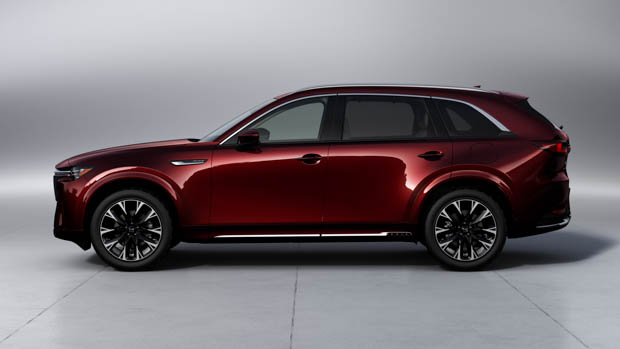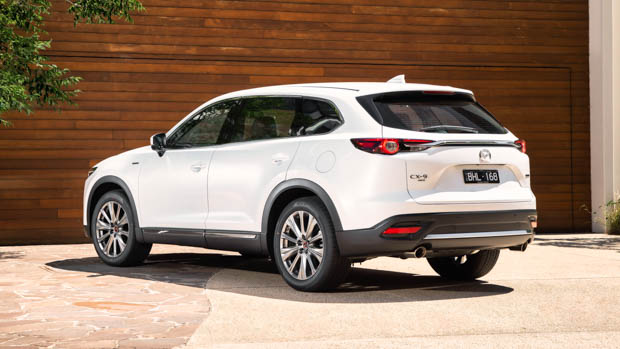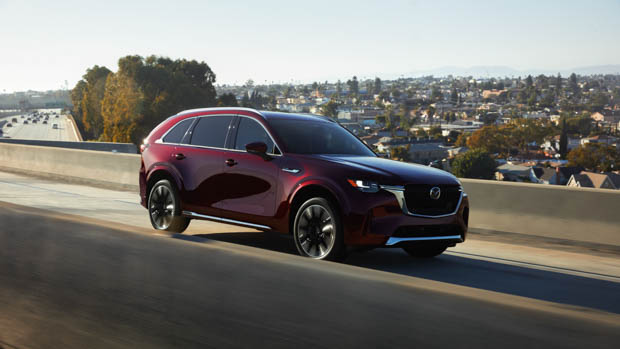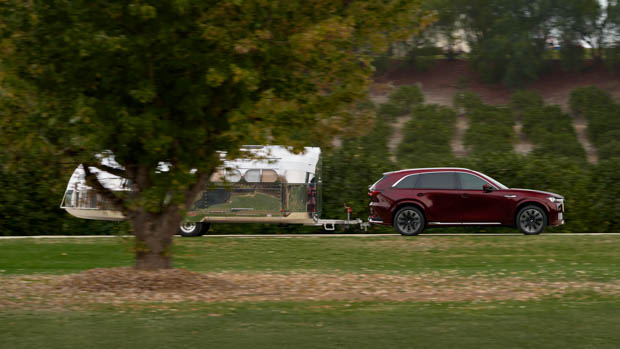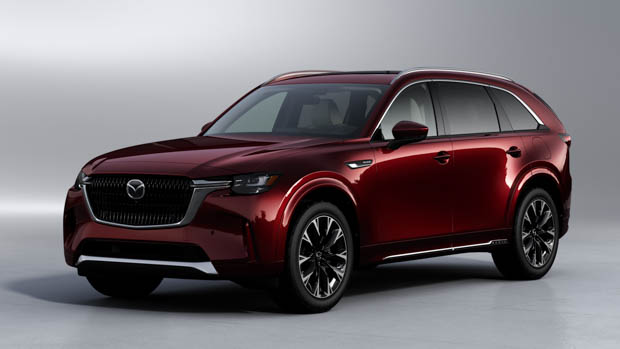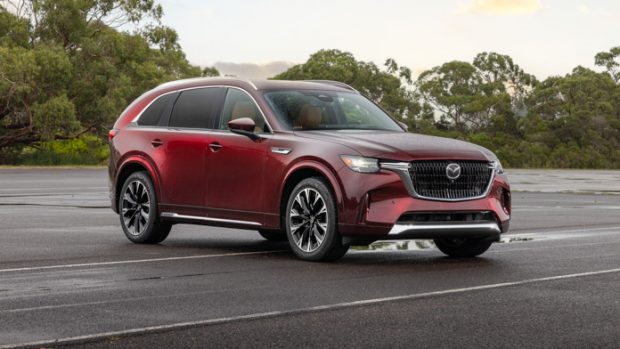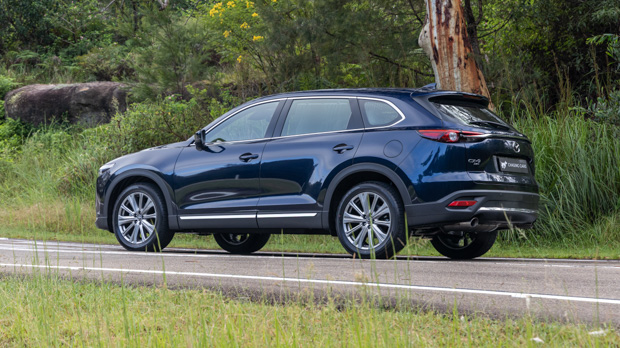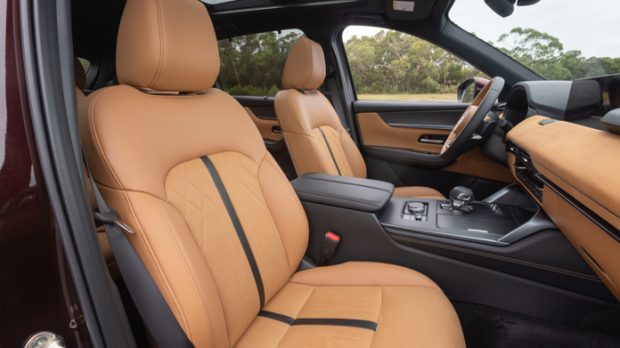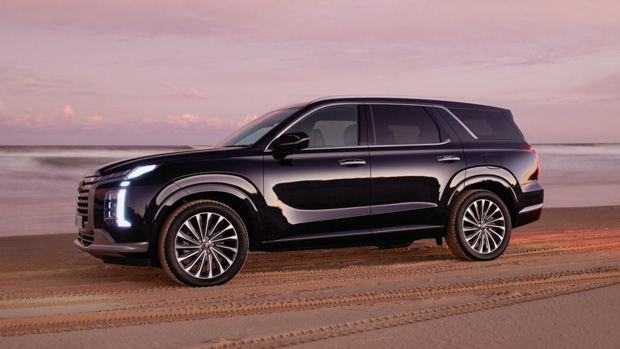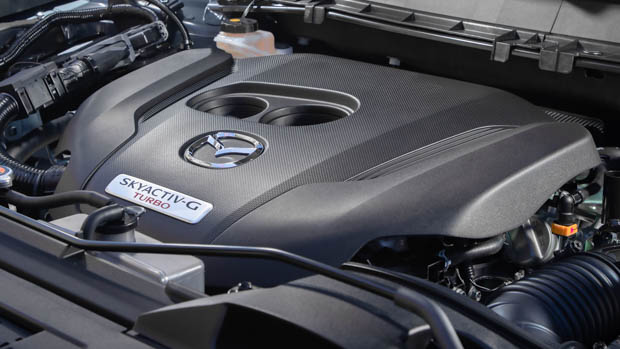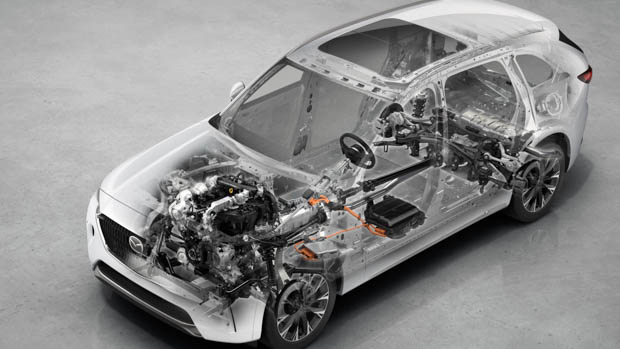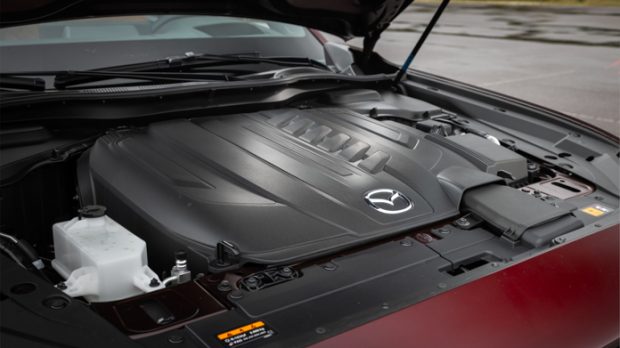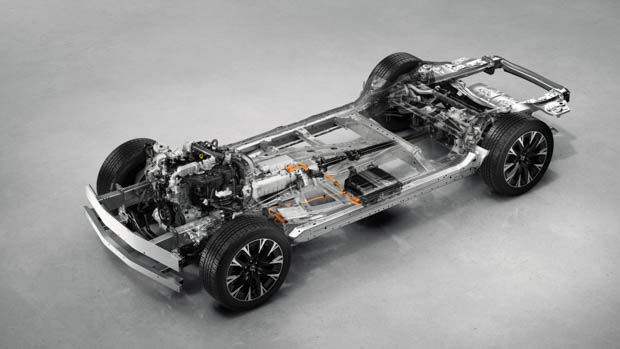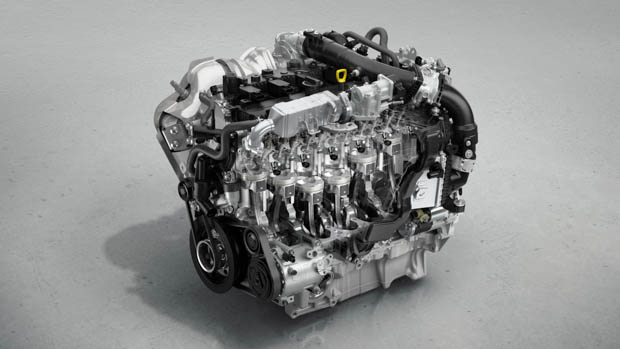-
Car Reviews
- All reviews
- Midsize SUVs
- Small cars
- Utes
- Small SUVs
- Large SUVs
- Large cars
- Sports SUVs
- Sports cars
- Vans
Latest reviews
- Car News
-
Car Comparisons
Latest comparisons
- Chasing Deals
Mazda is targeting the premium SUV segment with its new CX-90 SUV, but how much does it differ from the existing CX-9?
Mazda has its sights squarely set on the premium SUV market. First, it was the CX-60 that debuted as Mazda’s first vehicle to be run on the large product architecture. Then, the CX-80 and CX-90 were also announced.
The new CX-90 is due to arrive in Australia in the latter part of 2023.
The Japanese automaker has said that its shift to rear-wheel drive, longitudinal engines and more premium feeling SUVs has helped the brand to offer a vehicle for every kind of buyer.
But how much more premium is a CX-90 to a CX-9?
Chasing Cars sat down to figure out the differences between the two models. It’s worth noting that the CX-9 will be discontinued in Australia by the end of 2023.
The Mazda CX-9 basic specifications on the base Sport variant and up include:
Standard safety features on the CX-9 include:
The CX-90, meanwhile, has the following features standard across the range:
Standard safety features on the CX-90 include:
Comparing like for like, the Mazda CX-90 certainly has more standard features and a more premium focus, however the CX-9 is still well equipped for less money.
The current CX-9 in base Sport configuration measures in at 5075mm long, 1748mm tall and 1969mm wide, with a wheelbase of 2930mm. The Sport grade’s kerb weight is 1882kg.
Meanwhile, the new CX-90 is longer at 5120mm, a touch shorter at 1745mm, but is quite a bit wider than the CX-9 at 1994mm. The CX-90 also has a larger wheelbase of 3120mm, which is likely to enhance interior comfort and space.
But one of the key differences between the two is weight. The CX-90 has a claimed kerb weight of 2190kg, making it 308kg heavier than the CX-9. This could come down to a few factors, including the incorporation of heavier inline-six engines, which we will get into later in this article.
The Mazda CX-9 currently starts from $47,600 before on-road costs for the Sport two-wheel-drive variant here in Australia. The range tops out at $71,915 before on-road costs for the flagship Azami with all-wheel drive. That’s a price difference of $24,315 between base and flagship grades.
The CX-90, in comparison, will start at a much higher entry point – $74,385 before on-road costs for the CX-90 Touring – and will cost as much as $100,185 before on-road costs for the Azami flagship. From base variant to flagship, the range spans $25,800.
The CX-90 is therefore clearly targeting a completely different part of the market when compared to the CX-9. Although Mazda doesn’t like to say it, at this price point, it’s pushing Mazda closer towards luxury European rivals such as Audi, BMW and Mercedes-Benz, just to name a few.
The current CX-9 competes in a class of large SUVs including the Toyota Kluger and Hyundai Palisade.
In comparison, the CX-90 will compete with more luxury alternatives such as the Volvo XC90 (and upcoming EX90), Audi Q7 and the BMW X5.
CX-9
No matter which variant of CX-9 you choose to buy, all grades come fitted with Mazda’s 2.5-litre turbocharged petrol four-cylinder engine. This unit produces outputs of 170kW/420Nm and is available mated to either a front-wheel-drive or all-wheel-drive setup.
The only available transmission for the 2.5-litre turbo four-cylinder is a six-speed automatic transmission.
In terms of fuel consumption, Mazda claims that for the front-drive variants, the average combined fuel economy is 8.4L/100km, while the all-wheel drive is understandably a little thirstier, claiming a combined fuel economy figure of 9.0L/100km.
CX-90
Mazda has in some ways gone in the opposite direction of the tide, deciding to bring larger-displacement inline-six engines into production when many manufacturers are looking towards electrification as the answer.
Two powertrains will be offered for the new CX-90, both of which are 3.3-litre inline-six engines.
The first is a 3.3-litre turbocharged petrol inline-six engine that produces 254kW of power and 500Nm of torque. Think of this engine like the answer to BMW’s inline-six engines. Mazda says its new petrol six-cylinder engine has a claimed combined fuel economy of 8.2L/100km.
The second engine is also 3.3-litres in displacement, but is turbo-diesel rather than petrol. The diesel powertrain makes less power than the turbo-petrol – 187kW – but produces more torque than the petrol – 550Nm.
Mazda claims that its turbo-diesel six will sip just 5.4L/100km on the combined fuel economy cycle, making it much more efficient than the 2.5-litre engine found in the CX-9.
Why go inline-six?
Mazda has said that it has been able to make its six-cylinder range of engines more efficient than smaller-displacement engines in its lineup.
For the diesel unit, in particular, Mazda says it has improved the thermal efficiency of the engine, uses surplus air to aid acceleration response and has lowered nitrous oxide emissions.
A 48-volt mild-hybrid system also aids in making the engine more efficient, supplementing the combustion engine with power at certain points while driving.
Why not electrification, or a full electric CX-90?
While many other manufacturers are unveiling and releasing new electric SUVs very soon, Mazda seems adamant that its inline-six engines will be the answer for the time being.
Carmakers such as Volvo, who has announced its fully-electric EX90 SUV will be going into production, have decided enough is enough with the combustion engine. BMW, Mercedes-Benz, Audi and Volkswagen have also confirmed electric SUVs to be released in the coming years.
When speaking to Chasing Cars, Mazda was confident that its new engines would be around for some time, and would not speak about future electrification plans.
Latest news
About Chasing cars
Chasing Cars reviews are 100% independent.
Because we are powered by Budget Direct Insurance, we don’t receive advertising or sales revenue from car manufacturers.
We’re truly independent – giving you Australia’s best car reviews.
